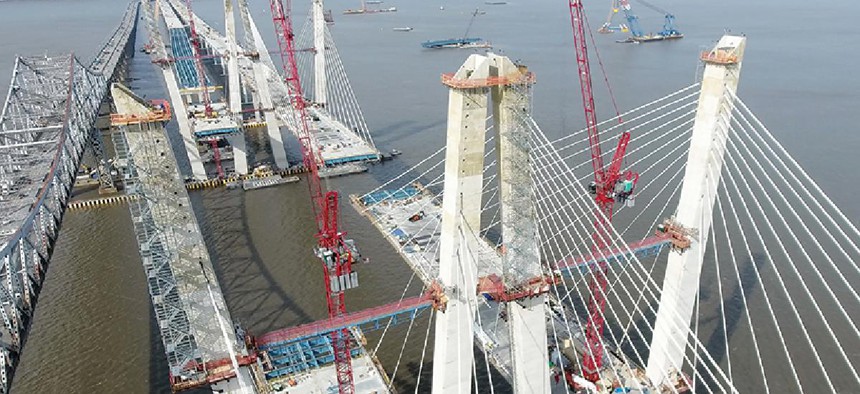At the end of last year’s state legislative session, it seemed as though the broad coalition of industry advocates, legislators and bureaucrats were going to get what they have been seeking for years: the ability to use the design-build procurement method on government projects in New York City, quickening the pace of construction projects and cutting costs that are ultimately borne by taxpayers.
The bill had passed the Assembly and it looked to have support in the state Senate. But the final days of the session ended with the regular flurry of bills without the Senate version finding its way into the legislation conglomerate pushed through the state Legislature, usually in the wee hours, known to Albany insiders as the “Big Ugly.”
RELATED: Who is authorized for design build and who is not
Assemblyman Michael Benedetto, a Bronx lawmaker who sponsored the design-build bill, expressed optimism that the legislation will get through in 2018. Design-build, which can be used by five state agencies at the moment but is prohibited from use by other government agencies, combines portions of projects required under state law to go through separate procurement processes into one bid.
“Anything that saves money, while at the same time ensuring that it’s quality construction going on, is also saving money for the taxpayers,” Benedetto said. “That’s a no brainer.”
The legislation enjoys bipartisan support and, at least publicly, has been pushed by Gov. Andrew Cuomo and New York City Mayor Bill de Blasio. Some speculate that the state Senate’s Republican leadership did not want to hand de Blasio, a sworn enemy, something he explicitly asked for during testimony in their chamber last year. Others have said that perhaps the governor and and the mayor, who are also locked in a very public and ongoing feud, couldn’t come to terms on how exactly the program would work or who would get credit for its implementation. And while the legislation has the support of some unions, there are labor leaders who are concerned that it might cut their workers out of certain stages of the construction process or curtail efforts to raise the number of minority- and women-owned businesses getting contracts.
But the push is on again and lawmakers and bureaucrats seeking the expansion of the program to New York City are optimistic.
“Anything that saves money, while at the same time ensuring that it’s quality construction going on, is a no brainer.” – Assemblyman Michael Benedetto
New York City Department of Transportation Commissioner Polly Trottenberg said that given how close the bills previously came to passing, she has hope that next year it may be easier to get through the state Legislature.
“Given that we did have some momentum at the end of last year’s session, we’d like to get to it as soon as we can for the 2018 session,” she said.
RELATED: Design build would allow the city to build smarter and faster
Trottenberg and Benedetto both pointed to an upcoming reconstruction project on a section of the Brooklyn-Queens Expressway as a prime example of why passing the legislation next year is critical. Using the design-build program for the project is projected to shave about two years off the construction time.
That reduction in time, plus the money that would be saved on the project, has an immediate impact on New Yorkers, both those who live in nearby neighborhoods and those who use the highway to get to and from work every day, Trottenberg said.
“That makes a real difference in people’s lives,” she said.
While the outlook for the legislation is good, Benedetto cautioned against counting on anything in the state Capitol.
“The winds of Albany blow in many directions,” he said. “Right now, I’m hoping for fair weather and good sailing.”


